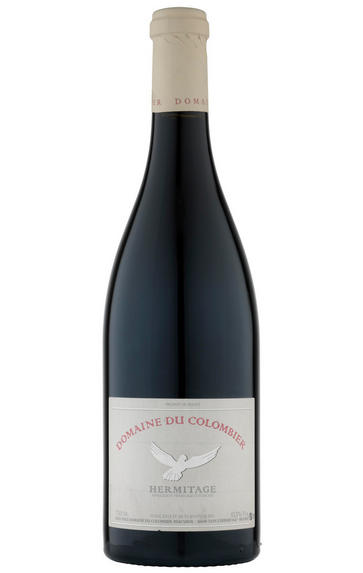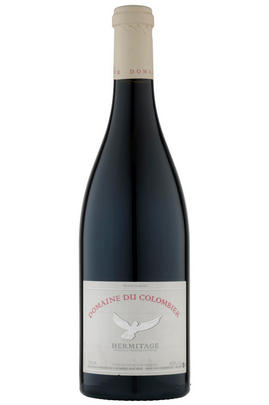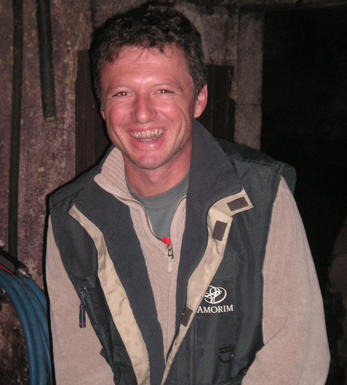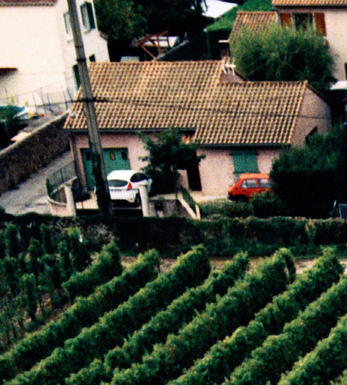
2012 Hermitage Rouge, Domaine du Colombier, Rhône

Critics reviews
Jeb Dunnuck - 30/12/2014
Jancis Robinson MW, jancisrobsinson.com - Jan 2014
About this WINE

Domaine du Colombier
Domaine du Colombier is widely recognised as one of the best sources of high quality Hermitage and Crozes Hermitage wine.
The Viale family planted their first vines at the foot of the Hermitage hill in 1929; now the representative of the third generation, the tall and charming Florent, owns over 13 hectares of vines liberally scattered on some of the best sites over the communes of Mercurol and Tain, including 1.5 hectares of vineyards in the renowned Beaumes vineyard on the famous Hermitage hill. Before 1992 the entire production was sold to local negociants (Guigal in particular) and so only recently have the Viales been estate bottling and marketing their own wines.
The average age vines in the holding in Beaumes is over 50 years and this is reflected in the wine which is renowned for their purity and harmony. The Syrah is fermented in a cement, stainless steel and wood, and then matured over eight months in cement and 600 ltr demi-muids.
Florent is keen on emphasising the primacy of ripe fruit above all else, but his wines are not without structure and ageing potential. Colombier’s Crozes Hermitage is now consistently one of the finest in the Appellation with the wines from 2001 (excepting the tricky 2002 and 2003) getting better and better, in particular this, the charming and relatively approachable 2006.

Hermitage
Hermitage is the most famous of all the northern Rhône appellations. The hill of Hermitage is situated above the town of Tain and overlooks the town of Tournon, just across the river. Hermitage has 120 hectares and produces tiny quantities of very long-lived reds.
The vines were grown in Roman times, although local folklore claims their origins to be nearly 600 years earlier. The name ‘Hermitage’ first appeared in the 16th century, derived from a legend of the 13th century Crusade, involving a wounded knight called Gaspard de Stérimberg, who made refuge on the hill, planted vines and became a hermit.
During the 17th century, Hermitage was recognised as one of the finest in Europe. In 1775, Château Lafite was blended with Hermitage and was one of the greatest wines of its day. In the late 19th century, however, Phylloxera wiped out all the vineyards.
The wines are powerful, with a deep colour and firm tannins, developing into some of the finest examples in France, with the potential to age for many decades. The best Hermitage is produced from several climats or more, blended together. The main climats are Les Bessards, Le Meal, L’Hermite, Les Greffieux and Les Diognieres. Most of the finest climats face broadly south, giving maximum sunshine. Most growers only have one or two climats and they might not complement each other; Hermitage quality can therefore vary hugely. Only the top producers have extensive diversified holdings.
80% of the wine produced is red, however up to 15% of white grapes can be used in the blend. Most growers use 100% Syrah and utilise the white grapes to make white wines only. Chapoutier, Jaboulet and Tain l'Hermitage are the principal proprietors of the appellation’s vineyards.
The white wines are made from the Marsanne and Roussanne grapes. Great white Hermitage can age, taking on the fruit characters of apricots and peaches, often giving a very nutty finish. The best examples in great vintages can last 50 years.
Mature red Hermitage can be confused with old Bordeaux. In a blind tasting of 1961 First Growth Clarets, the famous 1961 Hermitage La Chapelle was included. Most people, including its owner, Gerard Jaboulet, mistook it for Château Margaux.

Syrah/Shiraz
A noble black grape variety grown particularly in the Northern Rhône where it produces the great red wines of Hermitage, Cote Rôtie and Cornas, and in Australia where it produces wines of startling depth and intensity. Reasonably low yields are a crucial factor for quality as is picking at optimum ripeness. Its heartland, Hermitage and Côte Rôtie, consists of 270 hectares of steeply terraced vineyards producing wines that brim with pepper, spices, tar and black treacle when young. After 5-10 years they become smooth and velvety with pronounced fruit characteristics of damsons, raspberries, blackcurrants and loganberries.
It is now grown extensively in the Southern Rhône where it is blended with Grenache and Mourvèdre to produce the great red wines of Châteauneuf du Pape and Gigondas amongst others. Its spiritual home in Australia is the Barossa Valley, where there are plantings dating as far back as 1860. Australian Shiraz tends to be sweeter than its Northern Rhône counterpart and the best examples are redolent of new leather, dark chocolate, liquorice, and prunes and display a blackcurrant lusciousness.
South African producers such as Eben Sadie are now producing world- class Shiraz wines that represent astonishing value for money.


Buying options
Add to wishlist
Description
The Hermitage has rather good pedigree, assembled as it is from plots in Beaume, Diognières and Péléat, all on the eastern side of the hill, closer to the winery and engendering wines which are closer, stylistically, to the Crozes, but with additional smoky-bacon complexity and finely-threaded tannins from the extra ageing, virtually all of which is in demi-muids, 20% of which are new.
Simon Field MW, Rhône Wine Buyer
Florent and David Viale continue to make ‘go-to’ wines, their attractive winery well located beneath the western side of the hill of Hermitage and their Crozes sourced on the more gentle slopes of Tain and Mercurol. Their holdings in Hermitage are modest at 2 hectares, but that’s two hectares more than many of their neighbours and they are suitably deferential to the vines in question. Florent advises that 2012 was a ‘very pleasant revelation at the assemblage stage’ and ranks it highly
wine at a glance
Delivery and quality guarantee